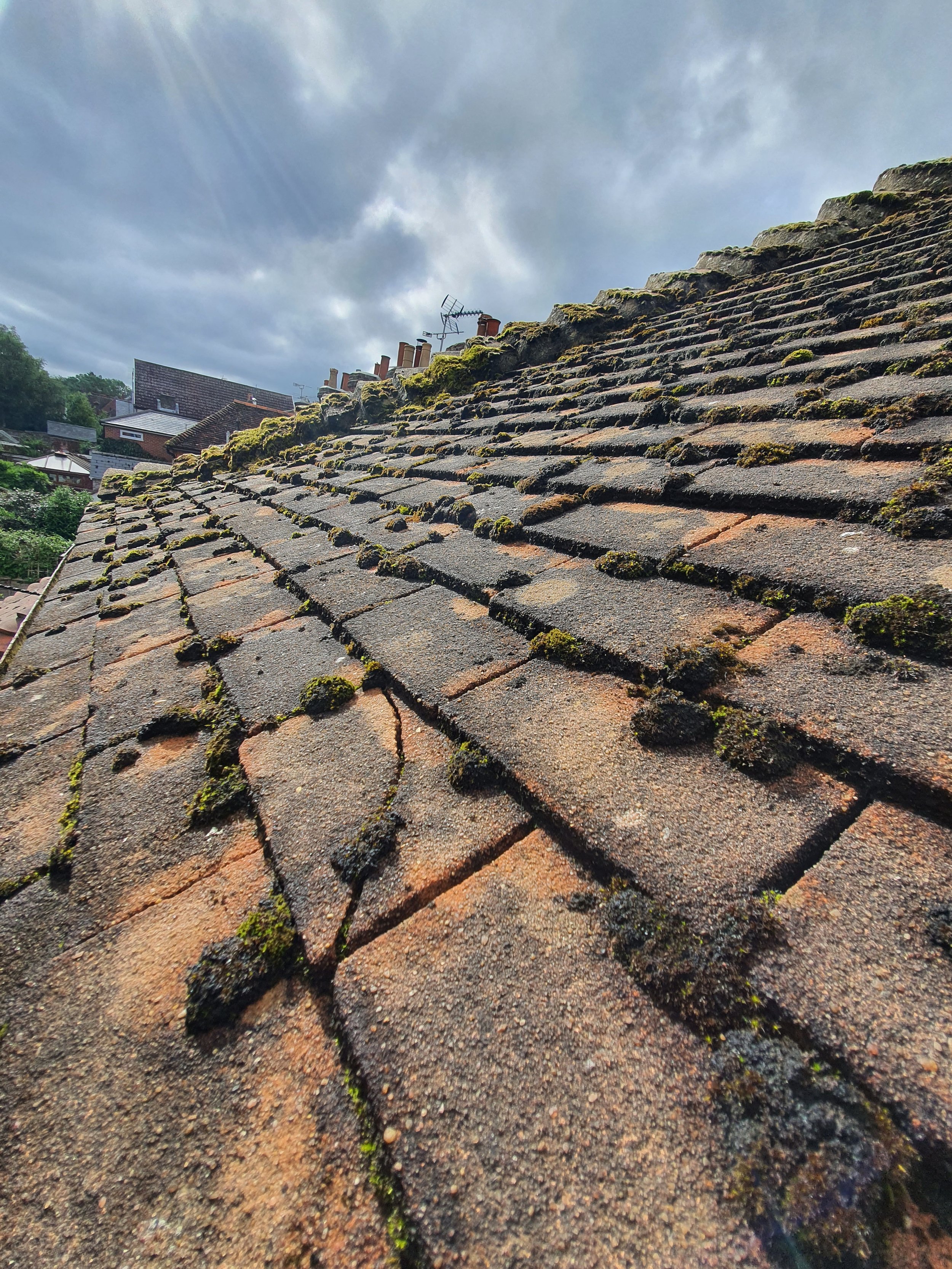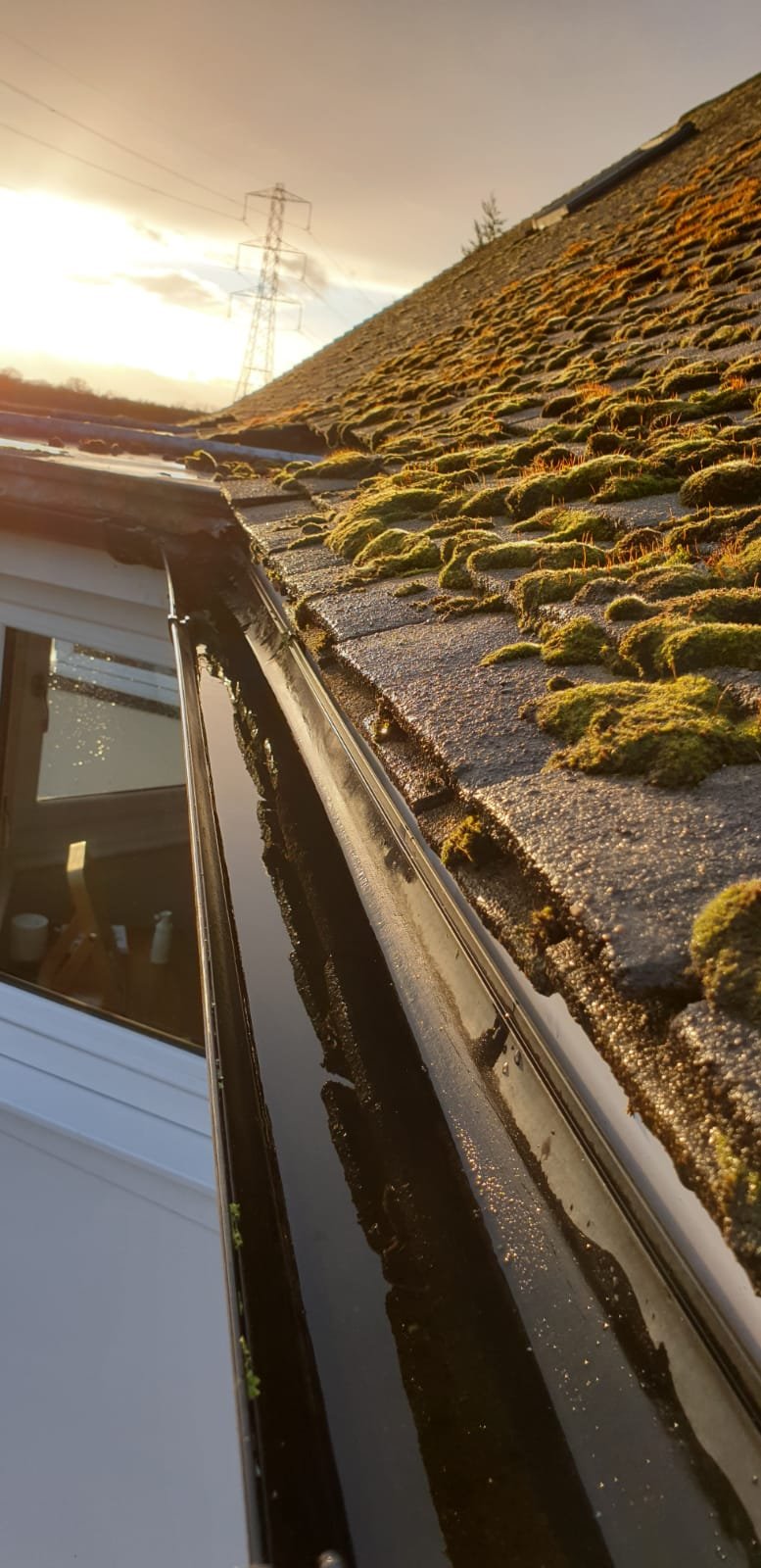Everything you need to know about roof cleaning - Part 1
This is the first of two blog posts answering common questions about roof cleaning. This post focuses on why it can be important to get your roof cleaned, the methods commonly used for roof cleaning, how long it takes and lasts, and how much it costs.
The second post, provides greater detail about the methods used, their pros and cons, access requirements and how to prepare a property prior to roof cleaning. You can read Part 2 here.
Do I need my roof cleaned?
Have you ever considered having your roof cleaned? The answer may well be ‘no’.
Many roofs will go their entire lifetime without the ‘need’ to be cleaned, and often, people will only think about having their roof cleaned once there is a related problem with the roof.
That said, there are a number of reasons why you might decide to have your roof professionally cleaned. These include:
prevention of, or because of concerns about, structural damage to the roof (more on this later…)
improving the appearance of the roof (for personal preference or to increase the perceived value of their home)
to remove moss or lichens which may fall into gutters (causing blockages) or onto pathways or patios (messy and possibly slippery).
Why do roofs need cleaning?
All roofs will, over time, be colonised by microorganisms which stick to the surface of the roof, particularly in moist environments, and begin to reproduce, forming what’s called a ‘biofilm’.
Moss and lichens growing on a tiled roof.
This process usually begins with phototrophic organisms (e.g. algae) which survive on carbon dioxide and sunlight. Once they have taken residence its then possible for heterotrophic organisms to move in. These organisms, which include most bacteria and all fungi, need an organic source to grow (i.e. the algae). Biofilms therefore often comprise of a mixture of species including bacteria, fungi, algae and yeasts along with other microorganisms and non-living debris. Quite the little community!
As wonderful as it may sound to have a micro ecosystem living on your roof, all biofilm has the potential to cause deterioration of, or damage to, the building material they are living on. For example, the aesthetic appearance of the roof tiles might be compromised (permanent staining) and/or roof tiles and mortar may be damaged which can then impact structures below (e.g. timber rafters).
The presence of biofilm, dirt and soot can also affect how much sunlight is absorbed by a roof and therefore the amount of heat absorbed. A clean roof will reflect light better and allow for better insulation (think staying cooler in summer months, rather than staying warmer in winter months).
Can moss damage my roof?
The short answer is ‘yes’. Moss is often the most obvious and recognisable growth that appears on roofs. It is bulky and relatively heavy (especially when wet) and can matt together, forming thick carpets and covering large areas.
Moss is spongy and so it retains a lot of water. This can add a lot of weight to a roof and stop moisture from freely leaving the roof space. If moisture cannot escape, the roof tiles will stay wet. This moisture may then transfer to the structure underneath, damaging timber rafters by causing bowing or rotting.
Moss also grows very well on cement. This could potentially damage the bonds on a roof between ridge tiles or around lead flashing, causing the bonds to break.
Moss can also:
cause tiles to be lifted or dislodged (when it grows between or underneath them)
cause cracks and splits in roof tiles
cause corners of tiles to be broken off (a result of the expansion and contraction of moss as it freezes and thaws)
make it difficult to inspect the condition of the roof in the case of repairs being needed
cause gutters to be persistently blocked by falling moss
degrade the protective coating on some tile types
result in mess on patios, pathways, driveways.
What are the best ways of cleaning a roof?
In the UK, there are three main approaches to cleaning a pitched, tiled roof. These are:
Scrape + Biocide
Pressure Washing
Steam Cleaning
Generally, scraping a roof with specialised tools and then applying a biocide will be the gentlest and safest option for roof cleaning. However, each of these methods has pros and cons and will be more- or less-suited to different types of roofs and/or roofing materials.
Thatch can be cleaned using the correct biocide.
What about thatch?
Even thatch can be cleaned using the correct biocide.
We’ve put together another blog post - our Guide to Roof Cleaning Methods – which takes a deeper dive into the technical aspects of these approaches and their suitability for different types of roofs or roofing materials.
How long does roof cleaning take?
Most jobs will take one to two workers one to three days to complete. The time required will vary with the:
size of the roof (e.g. in square meters)
level of soiling
ease or difficulty of access
type of access equipment needed
the methods used to clean the roof
travel time to and from the job.
Specialist access and roof cleaning equipment
How Much Does Roof Cleaning Cost?
All the above factors will also influence the price of a roof clean and, as such, we price all jobs individually.
Even on a smallish roof though, roof cleaning is a significant undertaking. It’s also a labour-intensive process and specialist equipment and knowledge is needed.
Rough Guide: prices may range, for example, from £700 for a two-bed bungalow up to £3,000+ for a large, detached property*.
(* Prices are for the scrape and biocide method and exclude VAT.)
How Long Will Roof Cleaning Last?
This will depend on the method used to clean the roof.
If the roof is treated with a biocide after scraping, pressure washing or steam cleaning then the result should last a good number of years. Without biocide treatment, any living remnants will quickly recolonise the roof (e.g. in weeks or months).
Even after biocide treatment some roofs – for example, those in a moist environment - may begin to show signs of light green staining again after about four years. Moss is slow growing so will take a long time to reappear.
Once a roof has been fully cleaned, periodically re-treating with biocide should keep it looking clean and free of moss. Each roof is unique and subject to different environmental conditions but on average retreating the roof once every five years should do the trick.






